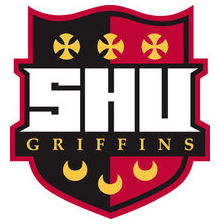Below is a summary of the abstract you submitted. Presenting author(s) is shown in bold.
If any changes need to be made, you can modify the abstract or change the authors.
You can also download a .docx version of this abstract.
If there are any problems, please email Dan at dar78@pitt.edu and he'll take care of them!
This abstract was last modified on May 1, 2018 at 5:03 p.m..

Microbacterium phage Musetta (ED2) and Gordonia phage Mulch (DI) were isolated from soil samples collected on the campus of Seton Hill University in Greensburg, PA and characterized by first-year undergraduate students participating in a one-semester combined phage discovery and bioinformatics SEA-PHAGES research course. Both phages were obtained through enrichment isolation at 25°C using the bacterial host Microbacterium foliorum NRRL B-24224 SEA (Musetta) and Gordonia terrae 3612 (Mulch), with Musetta producing clear plaques and Mulch producing turbid plaques after 48 h incubation at 30°C, indicating potential virulent and temperate properties, respectively. The genomes of Musetta (63.6 kb, 61.7% GC, defined linear ends) and Mulch (49.9 kb, 67.3% GC, 10 bp overhang) were annotated using PECAAN, DNA Master, HHPred, Phamerator, Starterator, tRNAScan-SE, Aragorn, and the Blast program suite. Musetta contains 122 putative protein-coding genes and 4 tRNAs, and Mulch contains 74 putative protein-coding genes and no tRNAs. Two orphams were identified in Musetta.


